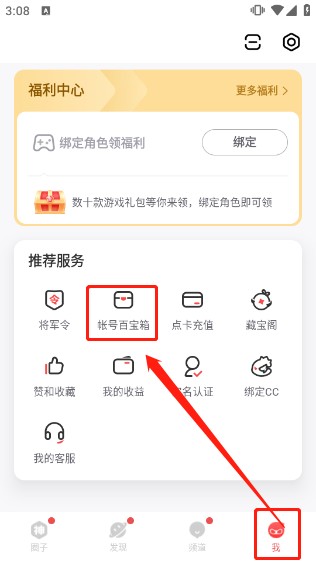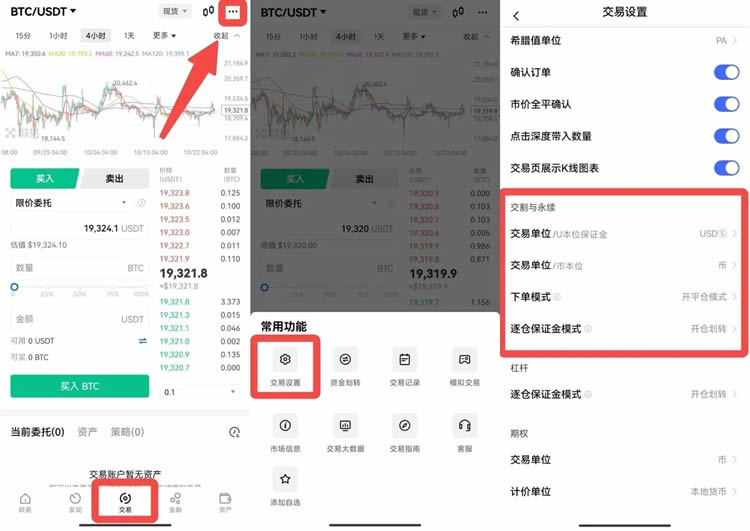CPP---IO流
时间:2010-05-03 来源:king__fisher
1
C++语言程序设计
本章主要内容
o I/O流的概念
o 输出流
o 输入流
o 输入/输出流
2
C++语言程序设计
I/O流的概念
? 当程序与外界环境进行信息交换时,存在着两个对象,一个是程序中的对象,另一个是文件对象。
? 流是一种抽象,它负责在数据的生产者和数据的消费者之间建立联系,并管理数据的流动。
? 程序建立一个流对象,并指定这个流对象与某个文件对象建立连接,程序操作流对象,流对象通过文件系统对所连接的文件对象产生作用。
? 读操作在流数据抽象中被称为(从流中)提取,写操作被称为(向流中)插入。
3
C++语言程序设计
输出流
? 最重要的三个输出流是
o ostream
o ofstream
o ostringstream
4
C++语言程序设计
输出流对象
? 预先定义的输出流对象:
o cout 标准输出
o cerr 标准错误输出,没有缓冲,发送给它的内容立即被输出。
o clog 类似于cerr,但是有缓冲,缓冲区满时被输出。
输出流
5
C++语言程序设计
输出流对象
? ofstream类支持磁盘文件输出
? 如果在构造函数中指定一个文件名,当构造这个文件时该文件是自动打开的
o ofstream myFile("filename",iosmode);
? 可以在调用默认构造函数之后使用open成员函数打开文件
ofstream myFile; //声明一个静态输出文件流对象
myFile.open("filename",iosmode);
//打 开文件,使流对象与文件建立联系
ofstream* pmyFile = new ofstream;
//建立一个动态的输 出文件流对象
pmyFile->open("filename",iosmode);
//打开文件,使流对象与文件建立 联系
输出流
6
C++语言程序设计
插入运算符(<<)
? 插入(<<)运算符是所有标准C++数据类型预先设计的。
? 用于传送字节到一个输出流对象。
输出流
7
C++语言程序设计
控制输出格式
? 控制输出宽度
o 为了调整输出,可以通过在流中放入setw操纵符或调用width成员函数为每个项指定输出宽度。
? 例11-1 使用width控制输出宽度
#include <iostream>
using namesoace std;
int main()
{ double values[] = {1.23,35.36,653.7,4358.24};
for(int i=0;i<4;i++)
{ cout.width(10);
cout << values[i] <<'\n';
}
}
输出流
输出结果:
1.23
35.36
653.7
4358.24
8
C++语言程序设计
例:使用*填充
#include <iostream>
using namespace std;
int main()
{ double values[]={1.23,35.36,653.7,4358.24};
for(int i=0; i<4; i++)
{ cout.width(10);
cout.fill('*');
cout<<values[i]<<'\n';
}
}
输出流
输出结果:
******1.23
*****35.36
*****653.7
***4358.24
9
C++语言程序设计
例11-2使用setw指定宽度
#include <iostream>
#include <iomanip>
using namespace std;
int main()
{ double values[]={1.23,35.36,653.7,4358.24};
char *names[]={"Zoot","Jimmy","Al","Stan"};
for(int i=0;i<4;i++)
cout<<setw(6)<<names[i]
<<setw(10)<<values[i]
<<endl;
}
输出 流
输出结果:
Zoot 1.23
Jimmy 35.36
Al 653.7
Stan 4358.24
11
C++语言程序设计
例11-3设置对齐方式
#include <iostream>
#include <iomanip>
using namespace std;
int main()
{ double values[]={1.23,35.36,653.7,4358.24};
char *names[]={"Zoot","Jimmy","Al","Stan"};
for(int i=0;i<4;i++)
cout<<setiosflags(ios::left)
<<setw(6)<<names[i]
<<resetiosflags(ios::left)
<<setw(10)<<values[i]
<<endl;
}
输出流
输 出结果:
Zoot 1.23
Jimmy 35.36
Al 653.7
Stan 4358.24
12
C++语言程序设计
例11-4控制输出精度
#include <iostream>
#include <iomanip>
using namespace std;
int main()
{ double values[]={1.23,35.36,653.7,4358.24};
char *names[]={"Zoot","Jimmy","Al","Stan"};
cout<<setiosflags(ios::scientific);
for(int i=0;i<4;i++)
cout<<setiosflags(ios::left)
<<setw(6)<<names[i]
<<resetiosflags(ios::left)
<<setw(10)<<setprecision(1)
<< values[i]<<endl;
}
输出流
输出结果:
Zoot 1
Jimmy 4e+001
Al 7e+002
Stan 4e+003
13
C++ 语言程序设计
进制
dec、oct和hex操纵符设置输入和输出的缺省进制。
输出流
14
C++ 语言程序设计
输出文件流成员函数
? 输出流成员函数有三种类型:
o 与操纵符等价的成员函数。
o 执行非格式化写操作的成员函数。
o 其它修改流状态且不同于操纵符或插入运算符的成员函数。
输出流
15
C++语言程序设计
输出文件流成员函数
? open函数
把流与一个特定的磁盘文件关联起来。
需要指定 打开模式。
? put函数
把一个字符写到输出流中。
? write函数
把内存中的一块内容写到一个输出文件流中
? seekp和tellp函数
操作文件流的内部指针
? close函数
关闭与一个输出文件流关联的磁盘文件
? 错误处理函数
在写到一个流时进行错误处理
输出流
16
C++语言程序设计
例 11-5向文件输出
#include <fstream>
using namespace std;
struct Date
{ int mo,da,yr; };
int main()
{
Date dt = {6,10,92};
ofstream tfile("date.dat",ios::binary);
tfile.write((char *) &dt,sizeof dt);
tfile.close();
}
输 出流
17
C++语言程序设计
二进制输出文件
? 以通常方式构造一个流,然后使用setmode成员函数,在文件打开后改变模式。
? 使用ofstream构造函数中的模式参量指定二进制输出模式
? 使用二进制操作符代替setmode成员函数:ofs << binary;
输出流
18
C++语言程序设计
输入流
? 重要的输入流类:
o istream类最适合用于顺序文本模式输入 。
cin是其派生类istream_withassign的对象。
o ifstream类支持磁盘文件输入。
o istringstream
19
C++语言程序设计
输 入流对象
? 如果在构造函数中指定一个文件名,在构造该对象时该文件便自动打开。
ifstream myFile("filename",iosmode);
? 在调用缺省构造函数之后使用open函数来打开文件。
ifstream myFile;//建立一个文件流对象
myFile.open("filename",iosmode);
//打开文件"filename"
输入流
20
C++语言程序设计
提取运算符 (>>)
? 提取运算符(>>)对于所有标准C++数据类型都是预先设计好的。
? 是从一个输入流对象获取字节最容易的方法。
? ios类中的很多操纵符都可以应用于输入流。但是只有少数几个对输入流对象具有实际影响,其中最重要的是进制操纵符dec、oct和hex。
输 入流
21
C++语言程序设计
输入流成员函数
? open函数把该流与一个特定磁盘文件相关联。
? get函数的功能与提取运算符(>>)很相像,主要的不同点是get函数在读入数据时包括空白字符。(第6章介绍过)
? getline的功能是从输入流中读取多个字符,并且允许指定输入终止字符,读取完成后,从读取的内容中删除终止字符。(第6章介绍过)
? read成员函数从一个文件读字节到一个指定的内存区域,由长度参数确定要读的字节数。
如果给出长度参数,当遇到文件结束或者在文本模式文件中 遇到文件结束标记字符时结束读取。
输入流
22
C++语言程序设计
输入流成员函数
? seekg函数用来设置输入文件流中读取数据位置的指针。
? tellg函数返回当前文件读指针的位置。
? close函数关闭与一个输入文件流关联的磁盘文件。
输入流
23
C++语言程序设计
例11-9 设置位置指针
#include <iostream>
#include <fstream>
using namespace std;
int main()
{ char ch;
ifstream tfile("payroll",ios::binary|ios::nocreate);
if(tfile)
{ tfile.seekg(8);
while(tfile.good())
{ tfile.get(ch);
if (!ch) break; cout<<ch; }
}
else
{ cout<<"ERROR: Cannot open file 'payroll'."<<endl; }
tfile.close();
}
输入流
24
C++语言程序设计
例11-8 文件读二进制记录
#include <iostream>
#include <fstream>
#include <cstring>
using namespace std;
int main()
{ struct
{ double salary;
char name[23];
} employee;
ifstream is("payroll",ios::binary|ios::nocreate);
if (is)
{ is.read((char *) &employee,sizeof(employee));
cout<<employee.name<<' '<<employee.salary<<endl;
}
else
{ cout<<"ERROR: Cannot open file 'payroll'."<<endl;}
is.close();
}
输入流
25
C++ 语言程序设计
例11-10 读文件并显示其中空格的位置
#include <iostream>
#include <fstream>
using namespace std;
int main()
{ char ch;
ifstream tfile("payroll",ios::binary|ios::nocreate);
if(tfile)
{while(tfile.good())
{streampos here = tfile.tellg();
tfile.get(ch);
if(ch==' ') cout<<"\nPosition "<< here<<" is a space";}
}
else{ cout<<"ERROR: Cannot open file 'payroll'."<<endl;}
tfile.close();
}
输入流










